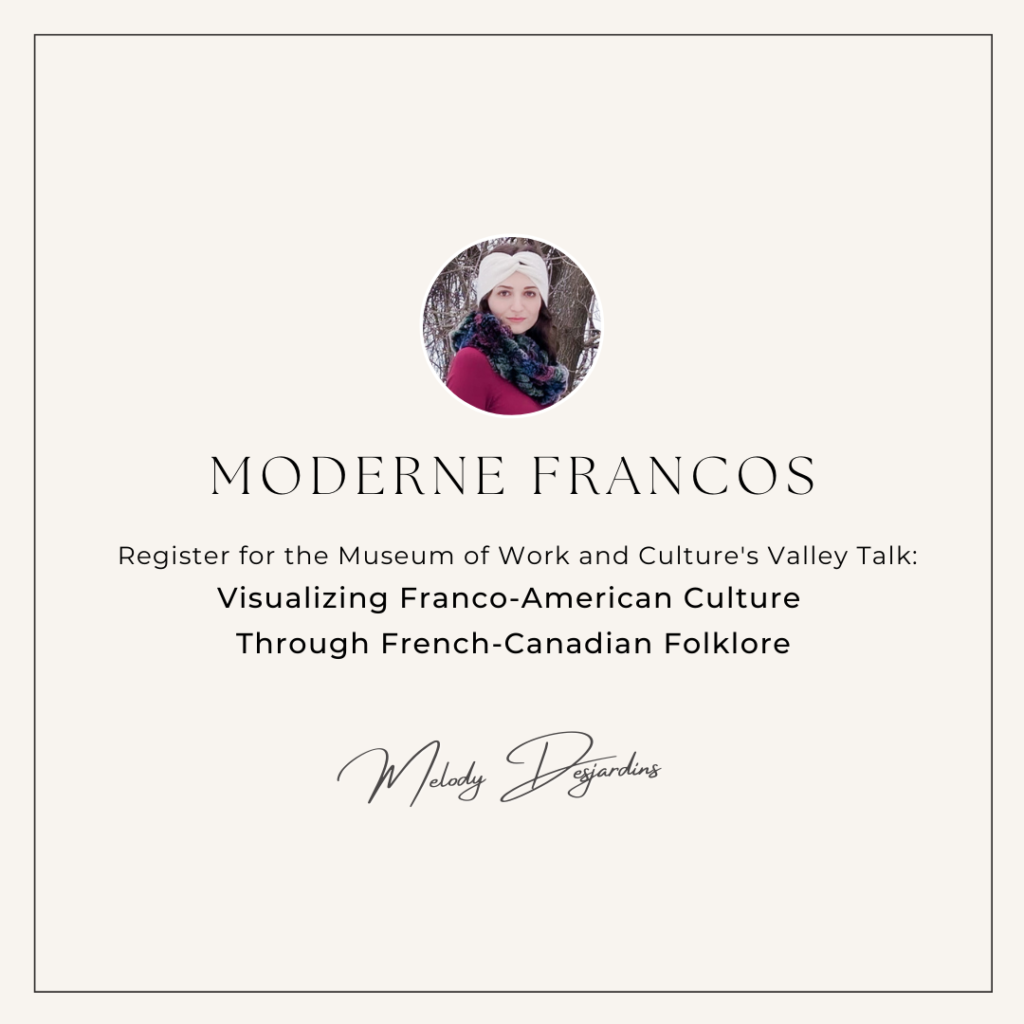
Salut, everyone! I’m giving a virtual Valley Talk presentation with the Museum of Work and Culture on March 5th at 1:30pm Eastern Time. Register for the talk for a deep dive into multiple aspects of French-Canadian folklore, from storytelling to dance to music to visuals.
To prepare for the presentation, let’s do an introduction to French-Canadian folklore and what it means for Franco-American culture.
In this post, I’ll highlight folklore as a whole, whether French-Canadians have visual culture, French-Canadian folklore, and whether we’re too modernized for these practices today.
Check out my virtual Valley Talk to learn about these ideas and concepts in more depth during my presentation!
What Is Folklore to a Culture?
The word “folk” refers to a culture of people in the past, typically in the agricultural countryside. Often, it’s a romanticized version of rural settings to remember a time before modernization. The idea captures “simpler” times when a community had a stronger connection with nature.
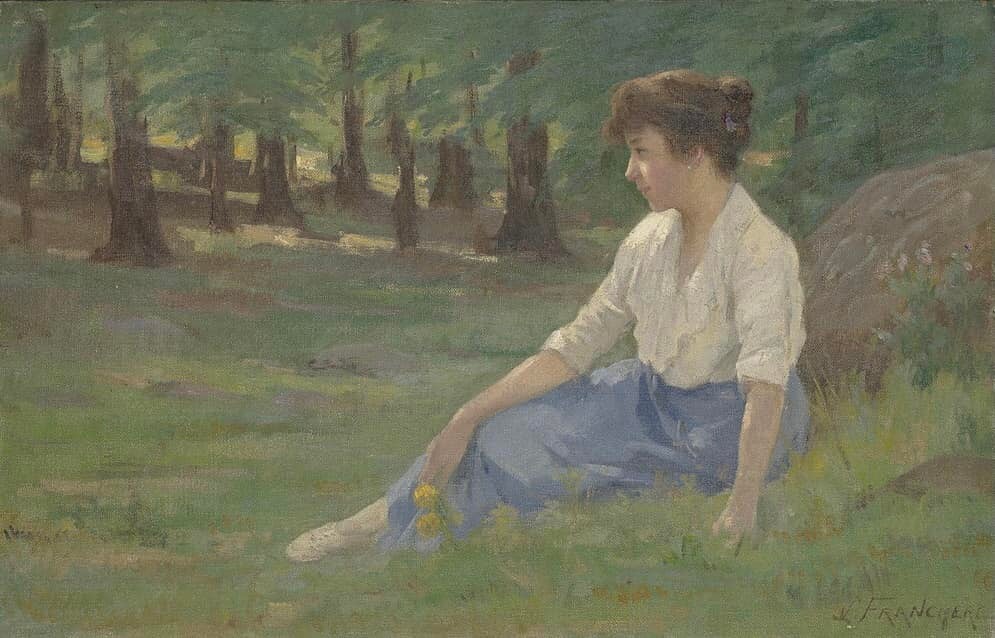
“Lore” describes the storytelling and various art forms that cultures of people practice and pass down to future generations. These include folktales, traditional music, and cultural clothing recognizable among a culture.
Overall, folklore is the combination of distinct traditions within a cultural group that sets it apart. Because of these art forms, we’re able to recognize all sorts of cultures around the world. Even if we can’t name the culture of people in a photo, we can look at their visual culture and have an educated guess about where they are in the world.
“Visual Culture” is anything that we can see that makes a heritage and cultural group unique.
Do French-Canadians Have Visual Culture?
In the days before forming this blog, I would endlessly search for visuals to connect with my Franco-American heritage. After all, I could do a quick search for the traditions of other cultures in my background and find a treasure trove of information.
But why couldn’t I find documents, costumes, clothing, and music describing French-Canadian folklore as easily?
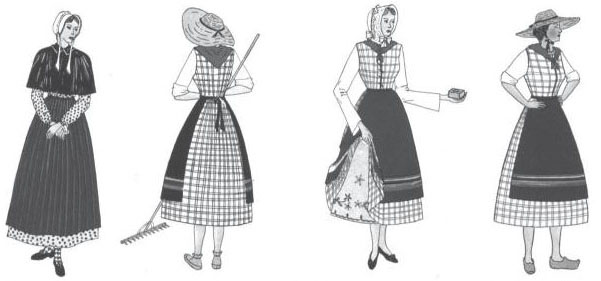
Could these designs inspire the ideas of French-Canadian cultural costumes?
During one particular search for French-Canadian cultural clothing and costumes, I found a website with examples of cultures around the world. However, the closest I could find were photos of Canadians in red ski gear labeled as their “cultural costume.”
Although it was a little funny to find, we all have a cultural heritage to celebrate. For French-Canadians, there’s cultural depth within winter activities. Which makes sense with the colder climate up north, so winter is really when French-Canadian culture stands out.
Look at Bonhomme of the Winter Carnival, the beautiful ice hotels and sculptures, historical snowshoeing teams, and other visual aspects of Québec winter. There’s a magic quality about finding creative ways of enjoying the freezing environment.
Among those examples mentioned, what are people often wearing at these winter festivals and activities? The most prominent piece of clothing is the ceinture fléchée, a colorful woven belt worn around the waist. Inspired by the early voyageurs of New France, it was a way to keep their long coats closed while on the move.

These long coats were often worn by French-Canadians in the early 19th and 20th centuries, before modern clothing became more accessible. Called capotes, these coats come in a variety of neutral colors like beige, tan, and white.
Other identifying pieces of French-Canadian clothing include the tuque, a warm winter cap. It’s often depicted in paintings and media as red, like the one our friend Bonhomme wears. However, it can come in different solid colors as well like light blue and white.
The capote, tuque, and ceinture fléchée were often worn by men and women on early snowshoeing teams. So, perhaps snowshoes could be another identifier of French-Canadian culture.
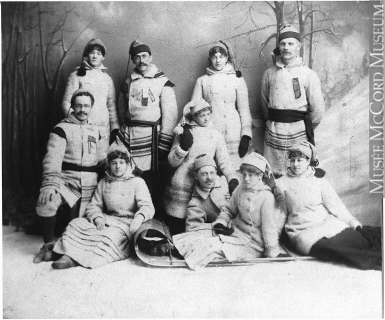
Check out my posts about French-Canadian costumes at winter festivals for more about embracing the cold and finding your own voyageur style.
For the summer, check out my post about celebrating Saint-Jean Baptiste with simple costumes honoring French-Canadian and Québécois culture.
Visuals and Sounds of Folk Music & Dance
Every culture has traditional folk music and dances performed at celebrations and other events. French-Canada is no different with many folk songs done in a call-and-response, similar to folk music styles of Western France.
This folk music style was popular among les voyageurs who worked in groups. These types of songs are sung within a group, giving each singer time to breathe while the other members sing. Which is handy and keeps up morale when working hard labor within a group of workers.
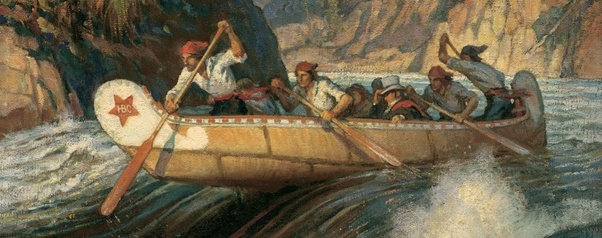
Previously on the blog, I covered Franco-American folk music and the uniqueness of our story being told within the lyrics. Between the singing in French and English are stories of emigrating to the United States from Québec, working in the New England mills, and modern experiences of being torn between two worlds.
Through the folk music traditions of French-Canada with fiddles, cuillère en bois, and Podorythmie, there’s plenty of room for many interpretations of the Franco-American story.
My favorite lyrics about this cultural divide we face as Franco-Americans standing between our French-Canadian heritage and our American nationality are from the songs French In America and Entre Moi by Josée Vachon.
The borders between lands are not all that we have crossed
Now, we must be taught the language that our mothers lost.
Now our fathers look at us and sigh with despair
To think that everything they love we simply do not share.
French In America
These lines settle deep in my heart, reminding me of my mémère and pépère who held their Franco-American identity in speaking French.
Within traditional French-Canadian folk music, there are various instruments and techniques used to create a distinct sound. For now, we’ll cover three of these things that appear more often in this genre.
- Cuillère à Bois: Wooden spoons used for folk music to create a percussion accompaniment.
- Podorythmie: Foot-tapping is a percussion technique in French-Canadian, Québécois, & Acadian folk music that uses the feet as an instrument to produce a particular rhythmic sound when they hit the floor.
- Fiddle: A violin used for traditional folk music with a long history in Canada. It’s often accompanied by an accordion.
- Accordion: A portable keyboard instrument with keys played with one hand while the other operates the bellows. In Québec, the button accordion is common in folk music.
Of course, there are more instruments found in French-Canadian and Québécois folk music. But through these traditional techniques and original lyrics, Franco-Americans utilize folk music to create our stories.
Check out my post about Franco-American folk music, which features Vachon and other great musicians: Discovering Our Story in the Franco-American Music Scene.
For a look at the visual depictions of French-Canadians in film, check out Silent But Visible? French Canadians on Stage and Screen.
Folktales of New France
From the themes and tropes of French-Canadian folktales, we can compare and contrast them with more well-known stories in American culture that are mostly inspired by European folktales.
The folktales of New France have a different take of their surroundings, often embracing the darker themes the characters find themselves in rather than warding off evil for good. Within these tales, the devil often makes an appearance, tempting the common folk.
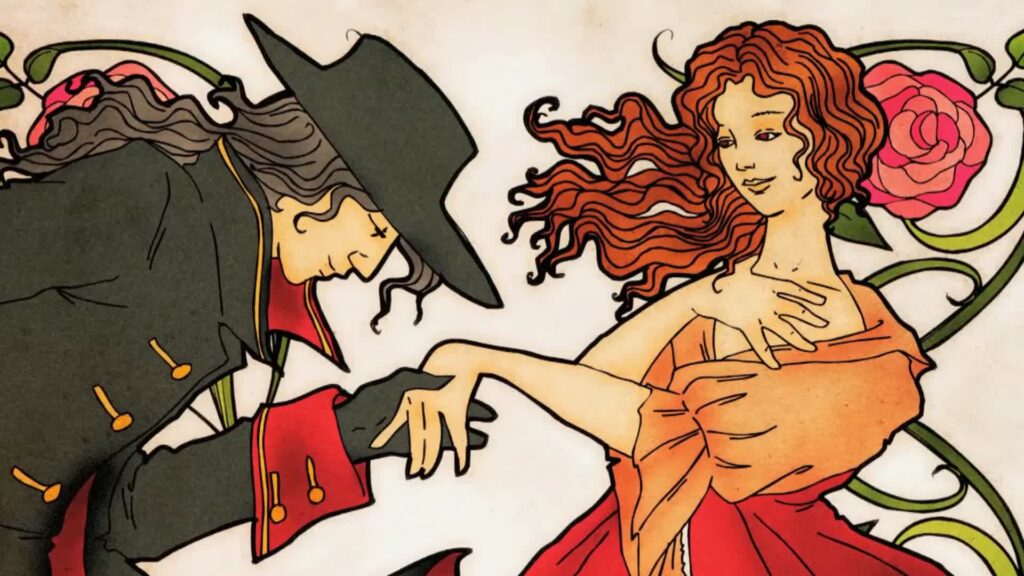
How different could French-Canadian folktales be from mainstream European folktales that inspired many American adaptations? Well, the former are more grounded in their approach to telling a story.
For instance, there may be le loup garou within a folktale but the story still takes place in New France. Meanwhile, more well-known folktales take place in magical lands typically inspired by a particular European country.
Further, European folktales have themes of royalty with kings, queens, princesses, and princes. There are also themes of rags to riches, where a poor peasant discovers their royal lineage or otherwise becomes the chosen one for a mission.
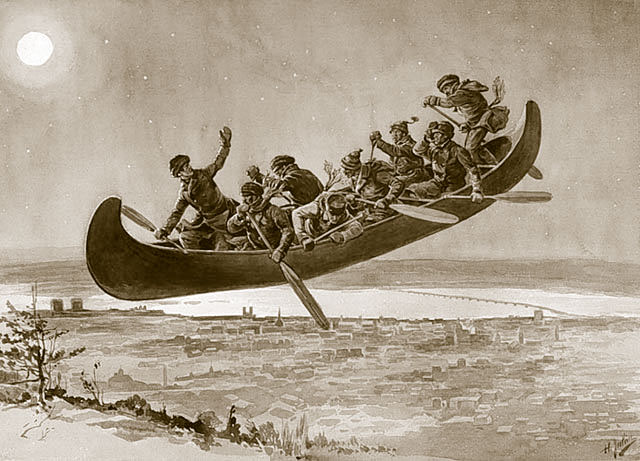
In French-Canadian tales, the focus is on the average people in New France. Particularly, les voyageurs, fur trappers, woodsmen, and the devil make appearances in these stories. The common man encounters spiritual magic performed by evil forces and somehow untangles themselves out of it by the end of the story.
Other themes of French-Canadian folklore include surviving the winter, Catholicism, and learning a life lesson against the trickery of evil forces.
Check out these examples of French-Canadian folktales: La Chasse-galerie (The Flying Canoe), The Clever Woman, The Legend of Rose Latulippe, and Le Loup Garou (The Werewolf).
To find French-Canadian folktales translated into English, check out Salem State University’s translations: Salem State University French-Canadian Folktales
Check out my full post about French-Canadian folktales: Moderne Francos French-Canadian Folktales
French-Canadian Holiday Traditions in Franco-America
Are there really specific holidays in Franco-American culture that differ from American culture? Oui! There are several holidays rooted in our history and culture stemming from our French-Canadian heritage.
These holidays include:
- La Fête Des Rois, December 31st through the 6th of January: The Feast of the Epiphany or The Festival of the Kings. Families gathered to enjoy each other’s company during house parties with food, music, games, and dancing.
- Le Réveillon, Dec. 31st through the 1st of January: The Awakening is a meal of traditional French-Canadian foods like Tourtière and maple treats. Traditionally, families attended Midnight Mass with dinner afterward, known as “the awakening,” or le réveillon.
- New Year’s Eve/Day: Isn’t NYE an American holiday? Yes, but it didn’t exactly start that way. In French-Canadian and Franco-American culture, New Year’s Day exceeded importance over Christmas because the latter was viewed as a religious holiday.
Because of this, on the 1st of January, Franco-Americans exchanged gifts and not on Christmas Day. NYE was a fun gathering and more of a party, which is how New Year’s Day eventually became a day off in the United States.
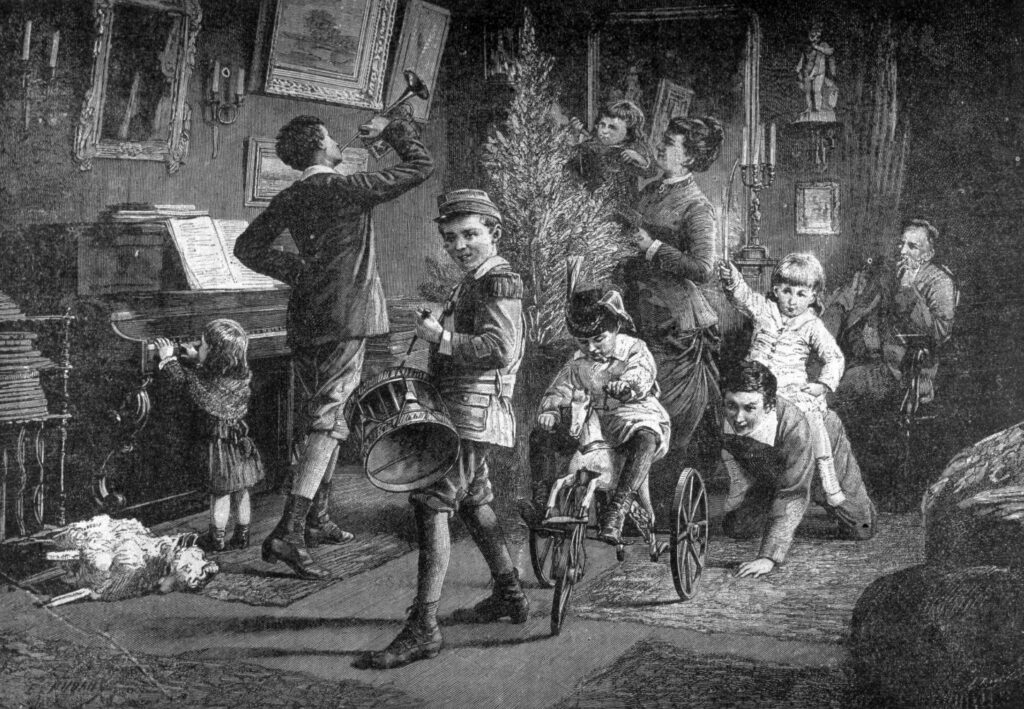
Library and National Archives of Quebec
During the winter holidays, Franco-Americans gathered at family house parties from Christmas Eve to the 6th of January. Some of these parties went late into the night, like 3am to 4am, where everyone told stories, played music, danced together, and found warmth from the cold, dark winter world outside.
- Saint-Jean Baptiste Day: SJB is a holiday celebrated on June 24th in the province of Québec. It’s celebrated by French-Canadians across Canada and Franco-Americans in the United States.
All of these holidays above have either become Americanized or not known by many Franco-Americans today. But similar to how Germans brought the tradition of the Christmas tree to mainstream American culture, Franco-Americans made New Year’s Day more of a recognized holiday and a day off.
Check out more resources about French-Canadian and Franco-American holidays:
Enjoying the Long Weekend? Thank Franco-Americans for New Year’s Day
Franco-American Holiday Traditions
La Saint-Jean-Baptiste in New England, 1873-1890
Histoire des Franco-Américains : Un survol
Are We Too Modernized for These Artistic Customs?
For the United States and Canada, we often think that we’re past these “Old World” traditions. However, particularly with our unique holidays and costume traditions, we can further unearth the often hidden Franco-American culture.
Throughout the United States, there are pockets of Franco-American culture with French-Canadian surnames on street signs, cities named after early French-Canadian explorers, and other cultural signifiers.
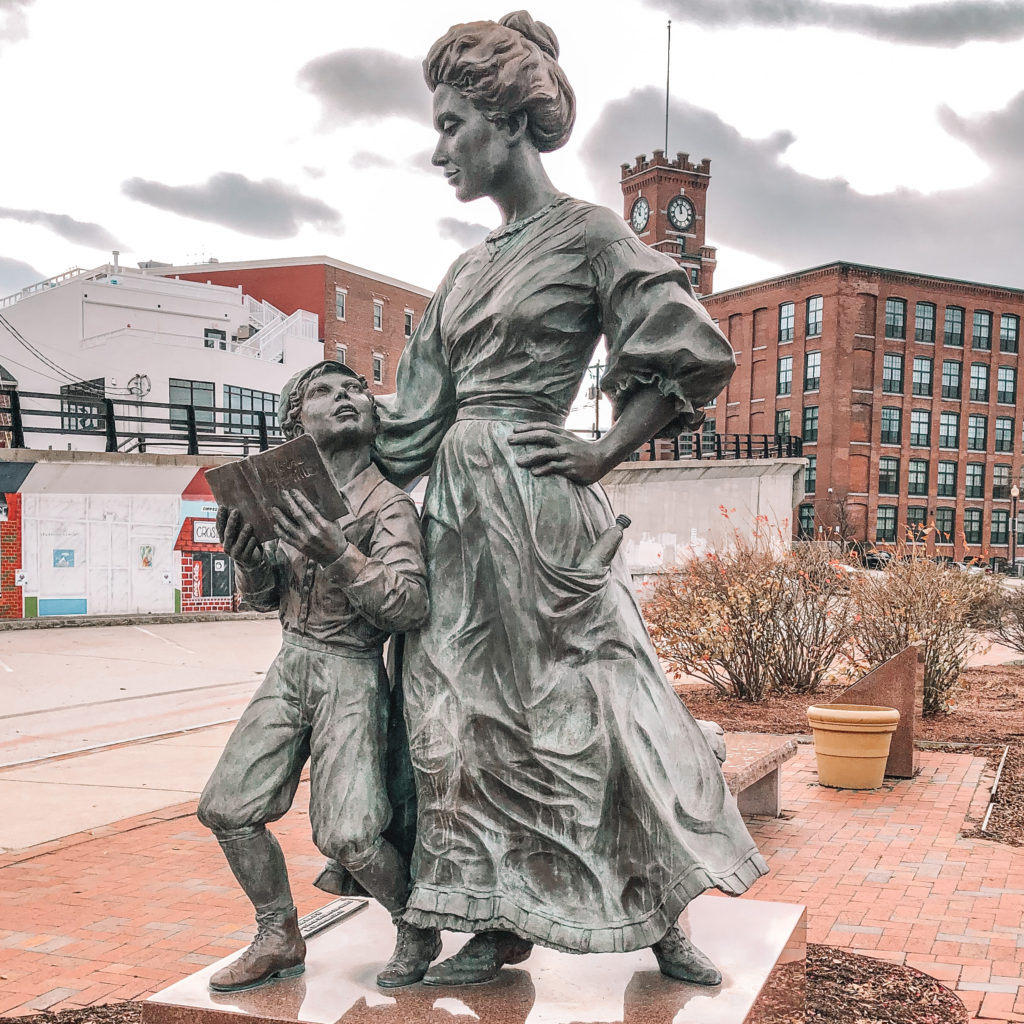
It doesn’t matter whether we’re Francophones, Anglophones, bilingual, or if the French-Canadian surnames were lost in some of our families. We can reinvent ourselves and take back our stories from where they were last placed.
To learn more about these traditions, register for my virtual Valley Talk with the Museum of Work & Culture: Valley Talks: Visualizing Franco-American Culture Through French-Canadian Folklore.
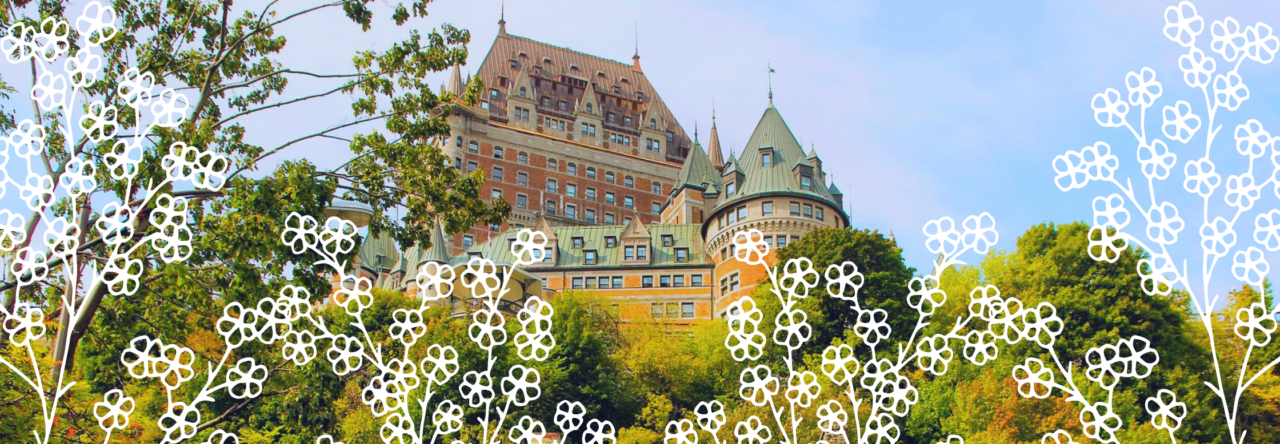
Rebecca Drew
I signed up for the event before finishing the article! Looking forward to it! And you are right, there is something magical about creating ice sculptures (and such) in order to deal with a freezing environment!
Melody Desjardins
Merci, Rebecca! I’ll see you there! And yes, I love the artistry with ice sculptures at the Winter Carnival! Makes me appreciate the winter season for its beauty.
Gabrielle
Très intéressant!
My husband and I will also be attending the event tomorrow. Looking forward to it!
Melody Desjardins
Merci, Gab! See you there! I’m looking forward to it.